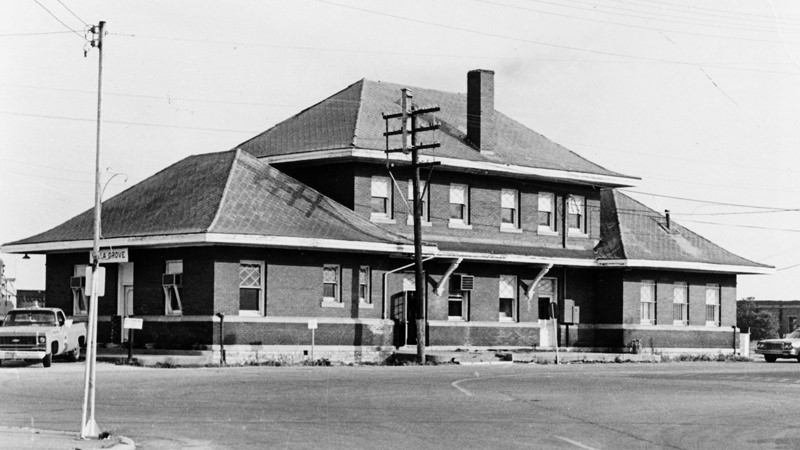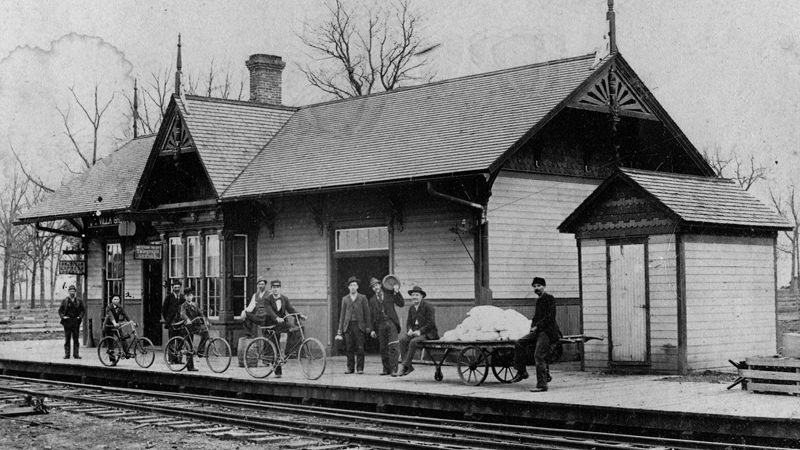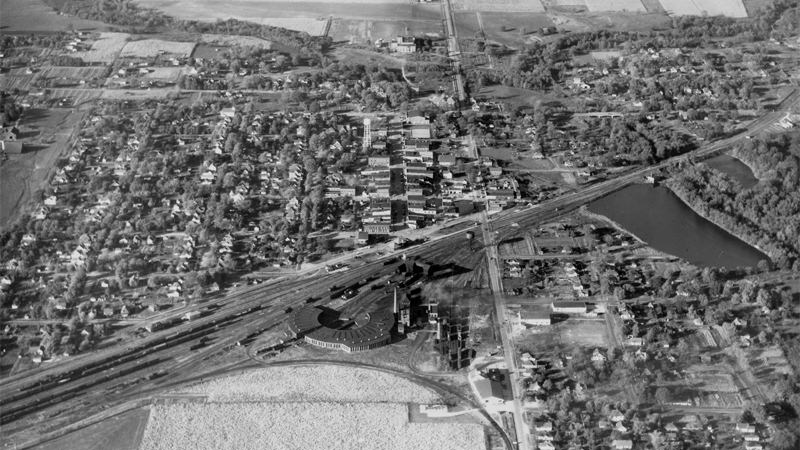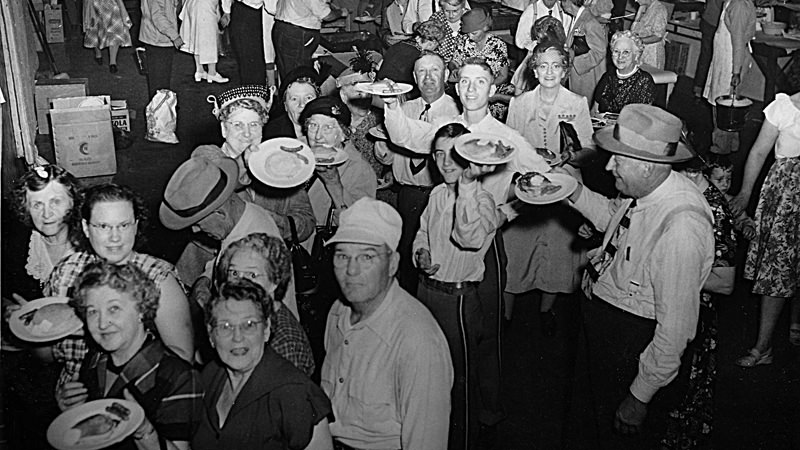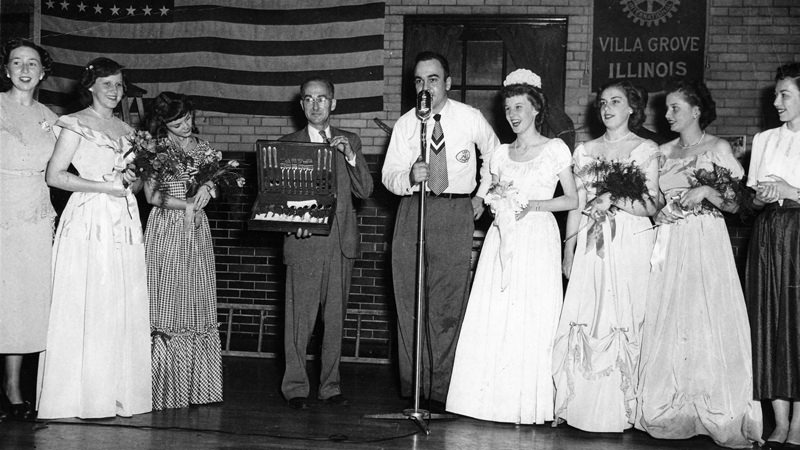
ABOUT
The village of Villa Grove was founded on June 23, 1887 as the railroad crews passed through laying rail to Tuscola from Danville. Hiram Beckwith, Danville attorney for the C&EI railroad, suggested naming the new village, Hensonville, after the Henson family who’s land the railroad passed through. The family countered this suggestion with Villa Grove since Beckwith often referred to the Henson home as “the villa in the grove.” Soon after this occasion and the first sales of house lots in 1890, the village began to grow in what has been known as “old town.” There would be a church, a school, a post office, a hotel, a grain elevator, a store, a harness shop and a population of about 200.
In 1902, the Chicago and Eastern Illinois Railroad was purchased by the Frisco. The Frisco wanted a faster route to St. Louis from Chicago so they could compete with the Illinois Central. To accomplish this, they built a shortcut across country from Woodland Junction north of Danville to Tuscola cutting through the little village of Villa Grove to join the original Danville line. At that time, they chose Villa Grove as a division point since Villa Grove was half way between Chicago and St. Louis, there was plenty of water (Embarrass River), and the land was available. This division point would have shops to make repairs to engines and cars. The railroad knew that they needed men to work in the shops and houses for their families to live in, so they purchased 260 acres of land, divided it into house lots with streets and “New” Villa Grove was born. In August of 1903, the first lots were sold and the “new” village grew up across the river from “old town.” The village soon filed to change their incorporation under state law and became a City in 1904.
Through the years, Villa Grove has grown from a railroad town to a community of families who mostly travel out of town to work. While train crews still change here, the railroad doesn’t have the same impact as they once did. Villa Grove still boasts a number of mom and pop businesses almost too numerous to list due to fear of leaving someone out. We have churches, civic organizations, summer rec programs, a great school system and many caring citizens who don’t hesitate to help a neighbor in need. In conclusion, it can be said that, “Villa Grove is a great place to live!”
Frisco Depot
This depot was built in 1904 by the Frisco Railroad Company, the owners of the Chicago and Eastern Illinois Railroad. This photo was taken in the 1960s. This depot would be razed in 1977 under the cover of darkness by the railroad. The local citizens were hoping to maintain the depot as a historic site and had just received a court order blocking its demolition. The railroad wanted more parking spaces.
Pancake Queen Candidates
Beginning in 1948, a queen was chosen each year to represent Villa Grove during the annual Pancake Festival. This photo shows the 1949 queen candidates. They are listed from left to right: Nellie Dubson; Phyllis Crawford; Violet Matteson; John Henson; Lee Clark of Pillsbury; Mary Wingle, 1949 Queen; Mary Workman and Sue Ann Maris. Evelyn Stevens, 1948 Queen is at the far right. Each year the queen would receive gifts from local merchants and an all-expense paid trip to Chicago. While there, she would be interviewed on local Chicago radio and television stations.

